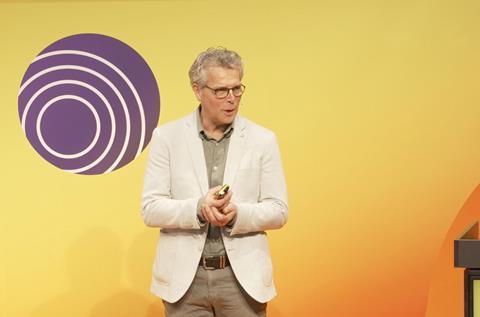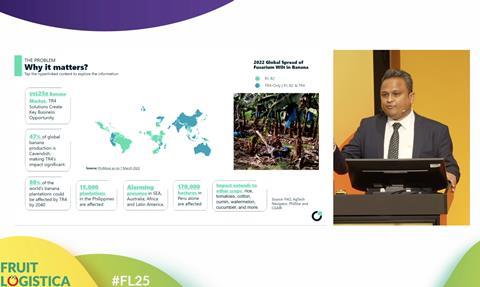The first of a two-part session on the Fresh Produce Forum stage discussed new breeding techniques and technology

A special two-part session took place on the Fresh Produce Forum state at Fruit Logistica, exploring groundbreaking innovations in fresh produce and explaining how advanced technologies and breeding techniques might shape the category in future.
Hosted by Fruitnet’s Chris White, it looked at how new types of fruit and vegetable could meet all of the challenges and needs of what is a rapidly changing world.
The first part of the session focused on how new breeding techniques could deliver more successful products in future, opening with a presentation by Dr Anup Karwa, managing director at Innoterra BioScience
Karwa outlined the work that Innoterra had been doing to develop InnoGreen, a natural mutation banana variety discovered in the Philippines that guards against the Fusarium Wilt TR4 disease.
“What we have done is take this mutation and undertaken a systematic propagation through viticulture techniques, and have commenced commercialisation,” he told delegates.
“We have sold around 500,000 saplings with several cooperatives and large growers in Davao, who have tested the variety for six generations, and the mutation is intact.”
He also presented a second solution in the fight against TR4, an organic, nature-derived organic biocontrolled vaccine called BanacXin.
“This was developed in India, and has a very high antagonistic effect in controlling TR4 – not only this, but we tested several strains of fusarium,” Karwa explained.

Anker Sorensen, vice president new business at Keygene, took to the stage next, to discuss new technologies impacting future product development.
”The take-home message is that we are actually starting to understand the language of life,” he noted. “It’s coded in DNA, it’s not zeroes and ones, it’s four letters – a, t, c and g – and we can now read it. The problem is understanding it, and based on that understanding a number of new technologies have been developed.”
He picked out several key developments that could, in the next five to ten years, go some way to solving the problems that the fresh produce industry is facing – namely sustainable, resilient and nutritional food production.
These included genomic design, genome editing, and cell and tissue technologies – all of which would be impacted by computational biology (AI).
“I think the technologies are there that can really impact how we make products in the future,” said Sorenson. They need to be integrated, by standing alone they won’t work.
”We need to build an innovation system, working with partners across the industry to figure out innovation throughout the chain,” he added. ”It’s not enough to invent new technology and then ask other people to produce it, develop it or the retailers to sell it. People need to talk about innovation together.”



